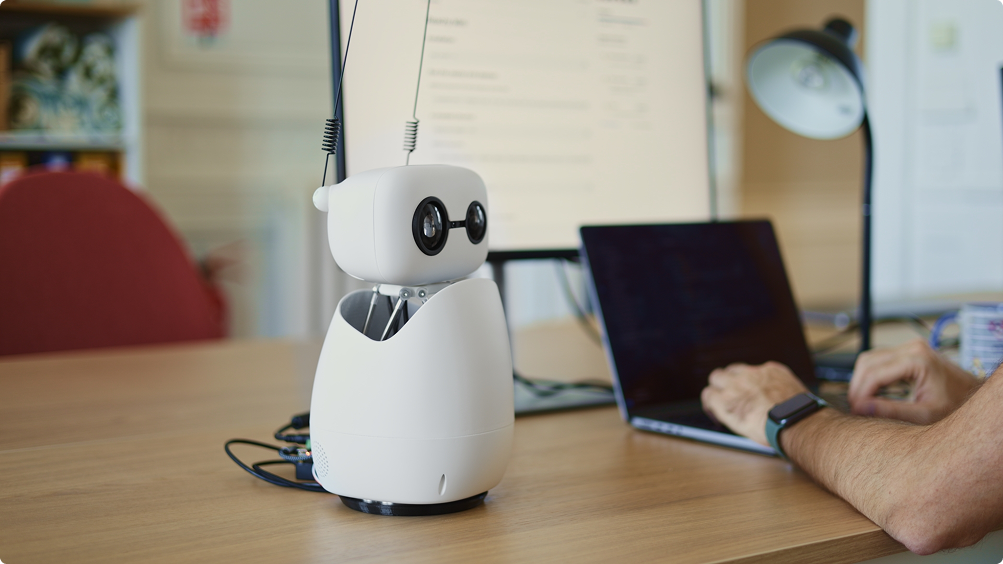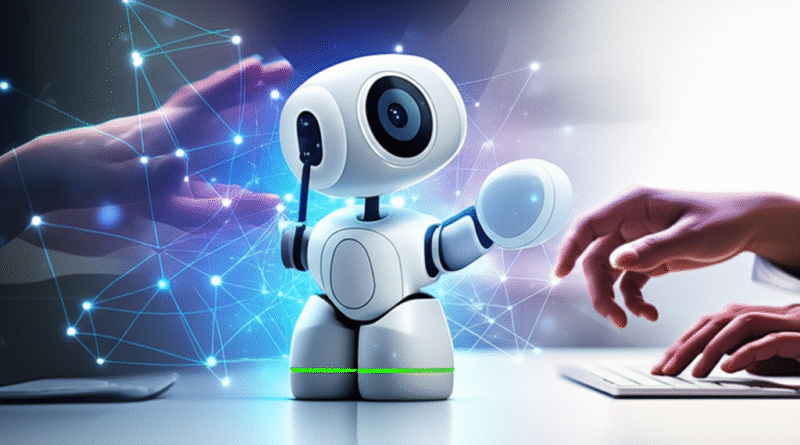Hugging Face Launches Reachy Mini: Open-Source Desktop Robots for AI Developers, Students, and Makers

The open-source AI revolution just got a lot more hands-on, and adorable. Hugging Face, the platform best known for democratizing machine learning models, is now bringing robotics into that same open frontier. The company has officially opened orders for its Reachy Mini, a palm-sized desktop robot designed for developers, tinkerers, educators, and curious minds who want to bring AI into the real world, physically.
Reachy Mini isn’t just a charming robotic companion; it’s Hugging Face’s declaration that the future of personal robotics should be accessible, programmable, and hackable by anyone.
Table of Contents
A Tiny Robot With Giant Potential
Originally teased earlier this year, Reachy Mini arrives in two models:
- Reachy Mini Lite – $299
A more affordable version that connects to an external computing device. - Reachy Mini Wireless – $449
Fully wireless and self-contained, powered by a Raspberry Pi 5.
Both versions are open-source, come in DIY kits, and are fully programmable in Python. In size, Reachy Mini resembles a plush toy, but with tech-packed features: dual LED “eyes” (mini displays), expressive antennae, and modular parts for future add-ons.
This isn’t just a toy. It’s a developer-grade, desktop-friendly robot backed by Hugging Face Hub, which offers seamless access to 1.7M+ models and 400,000+ datasets for inference and experimentation.
Why Hugging Face Is Going Physical
Clément Delangue, CEO and co-founder of Hugging Face, believes robotics is the next natural step for the platform. “Open-source software changed how we do AI, now it’s time to do the same for robots,” he said.
He added that the inspiration came from community feedback. During early prototyping, a user’s 5-year-old daughter wanted to carry the robot around like a pet. That insight helped Hugging Face realize the broad appeal of small, lightweight robots, and the creative potential when people can program them at will.
“This is a community product from day one,” said Delangue. “Everything is modular, buildable, forkable, and yes, adorable.”
What Can Reachy Mini Do?
Out of the box, Reachy Mini can do a lot more than blink and wave. Here’s a glimpse of what’s possible:
Real-Time LLM Interactions
You can pair Reachy Mini with any LLM from Hugging Face’s Hub, including fine-tuned GPT models, to build your own voice assistant, chatbot, or mini personal tutor that gestures while it speaks.
Classroom Demonstrations
Teachers can use Reachy Mini to demonstrate concepts in:
- Computer vision
- Language modeling
- Robotics programming
- Human-computer interaction
It’s perfect for STEM classrooms, AI bootcamps, or hackathons.
Experiment With Multimodal AI
Combine voice input, visual response (via the screens), and movement. Want it to nod when you ask a question? Smile when it recognizes an object? You can program all of that, and more, in Python.
Build Custom Applications
Some developers are already building apps like:
- A robot that tells jokes with facial expressions
- A mini receptionist for startup desks
- A programmable study buddy for kids learning to code
Why Open-Source Robotics Matters
The robotics space is often dominated by closed systems: expensive SDKs, limited APIs, and hardware lock-ins. Hugging Face is going in the opposite direction.
“We think robotics should be open,” said Delangue. “If AI is going to live in our homes, we should be able to inspect the code, and shape it ourselves.”
That’s why all hardware specs, CAD files, firmware, and software are available on Hugging Face’s GitHub repos. The Reachy Mini community is encouraged to fork designs, remix ideas, and contribute to new features.
This mirrors Hugging Face’s broader philosophy: the best AI tools emerge when developers collaborate, not compete in secrecy.
What’s in the Box?
Each Reachy Mini kit includes:
- Assembly components (pre-cut, color-coded)
- Dual-display “eye” modules
- Antennas and micro servo motors
- A Raspberry Pi 5 (only in Wireless version)
- Preloaded Python SDK with demos
- Access to Hugging Face’s Robotics Community Channel
- Documentation and video tutorials
Total build time? About 45 minutes for beginners. Less if you’ve built IKEA furniture before.
Use Cases That Inspire
To spark the imagination, Hugging Face shared early prototypes in action:
1. The Emotional Therapist Bot
A developer in Berlin built a Reachy Mini that mirrors empathetic expressions when listening. Paired with sentiment analysis models, it can nod, tilt its “head,” or widen its eyes in surprise.
2. Language Practice Buddy
A teacher in New York trained Reachy to respond to student questions in French. The robot uses Hugging Face’s translation models to switch languages on the fly.
3. A Game-Powered Assistant
One user synced Reachy with Hugging Face’s Diffusers library to generate short game maps based on commands. The robot reacts to terrain type by changing its eye color and movement.
Hugging Face’s Broader Robotics Vision
Reachy Mini is just the beginning. Hugging Face has also teased:
- A larger humanoid bot named HopeJR (still in prototype)
- Collaborative efforts with open-source hardware alliances
- Participation in initiatives like Robotics & AI4Good
Delangue says the goal is to avoid a future where robotics is dominated by a handful of tech giants. Instead, he envisions a world where communities, classrooms, and even kids can build intelligent, ethical machines together.
“We don’t want a world where robots are black boxes owned by one company,” he said. “We want open robots in every lab, classroom, and home.”
Preorder & Shipping Timeline
If you’re eager to get your hands on Reachy Mini, here’s what you need to know:
- Reachy Mini Lite: $299, ships next month
- Reachy Mini Wireless: $449, ships later this year
- Orders are placed directly through Hugging Face’s website
Hugging Face made a clear decision to avoid long, ambiguous pre-orders. “We want you to start building right away,” said Delangue.
Final Thoughts: Why This Matters
Reachy Mini isn’t a gimmick or a gadget, it’s a statement. In an AI world filled with hype, Hugging Face is rooting its mission in openness, play, and possibility.
This robot won’t walk your dog or clean your house. But it might help the next generation learn how to build the robot that will.
And in a time where AI tools often feel abstract, invisible, and overwhelming, Reachy Mini offers something rare: a tangible way to play, learn, and shape the future, with your own two hands.

